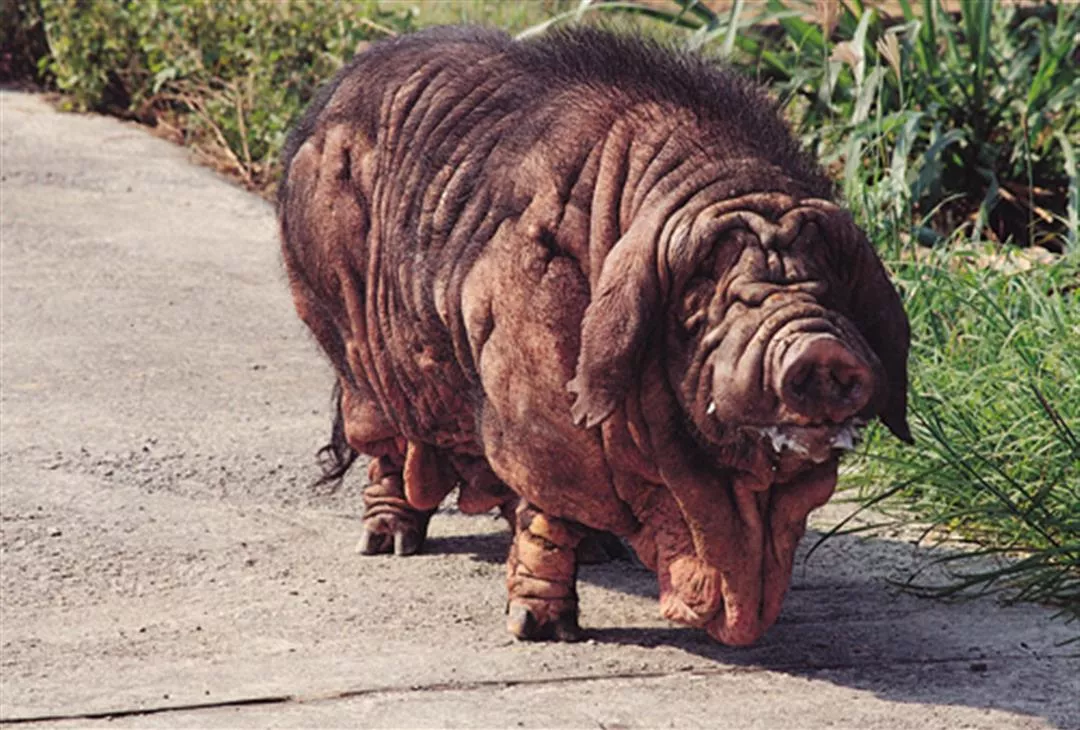Foreign vs. local pigs
The meat of the Formosan wild boar and the Lanyu miniature pig is somewhat coarse and low in fat content, not fatty or refined enough to be favored in the meat market. So, where does the pork eaten by the people of Taiwan come from?
According to Animal Technology Institute Taiwan researcher Yang Tien-shuh, the Hakka brought the Canton black pig to Taiwan in 1877, and raised it in Zhongli. The next year, the same breed was introduced to Meinong for breeding. Thereafter, these two introduced populations became the well known Taoyuan and Meinong pigs. Together with the Dingshuangxi pig raised by immigrants from Zhangzhou, they formed the "black triangle" of domestic pigs in 19th-century Taiwan.
"But Taiwan's native pigs were interbred with foreign breeds during the Japanese occupation," says Yang, noting that in 1896, the year after the Japanese military took Taiwan, they introduced the Berkshire pig. In 1900, they brought in Yorkshire pigs from the United Kingdom, and then in 1926 the Japanese governor-general offered Taiwan residents incentives to import superior breeds. "At that time, a hybrid of Berkshire and Taoyuan pigs attained a market share as high as 95%."
Foreign breeds such as the Duroc and certain foreign landraces have been in Taiwan for five or six decades, and Taiwan's farm hogs have gradually changed from black to white. According to a 2005 survey by the Council of Agriculture, black pigs account for just 12% of those raised. It can be said that black pigs have nearly vanished from the meat products market.
"It takes seven months to raise a 100-kg black pig, but just five to raise a foreign breed," says Fang Ching-chuan, who heads the National Animal Industry Foundation's Livestock Department, pointing out the differences in breeding efficiency between black and white pigs. While black pigs require four kilograms of feed to produce one kilogram of meat, foreign pigs need only consume three kilograms. Small wonder Taiwan's commercial hog farming industry, operating under the guiding principle of maximal output with minmial input, needed an overhaul. Even the TLRI black No. 1, developed by the Council of Agriculture, is a hybrid of a local (Taoyuan) and foreign (Duroc) pig.
The next time you dine on roasted, smoked or braised pork at the dinner table, think of how the pigs of Taiwan became Westernized and globalized a whole century before we did. Isn't that something to smile about? The foolish follow the wise, so next time you see a pig, don't call it stupid!
Understanding Taiwan's Pigs
| |
Lanyu miniature pig |
Formosan wild boar |
Foreign landrace |
Duroc |
Yorkshire |
| Adult weight(/kg) |
75∼90 |
50∼135 |
270∼330 |
270~450 |
340∼370 |
| Hair color |
Black |
Brown and black |
White |
Red-brown |
White |
| Litter size |
7 |
5 |
9 |
9 |
11 |
| Time introduced to Taiwan |
Prehistory |
Prehistory |
1960 |
1960 |
1900 |
| Pigs raised for human consumption in Taiwan are hybrids of foreign landrace (L), Yorkshire (Y) and Duroc (D) pigs: the L-Y-D pig and the L-D pig. |

The black-haired Taoyuan pig, once a common sight in the Hakka villages of old Taiwan, was the prime choice as a sacrificial pig for temple festivals. But they fell out of favor in the market due to their slow growth and low lean meat content. In 1987, the Taoyuan pig, along with the Lanyu miniature pig, was named a protected Taiwanese breed.